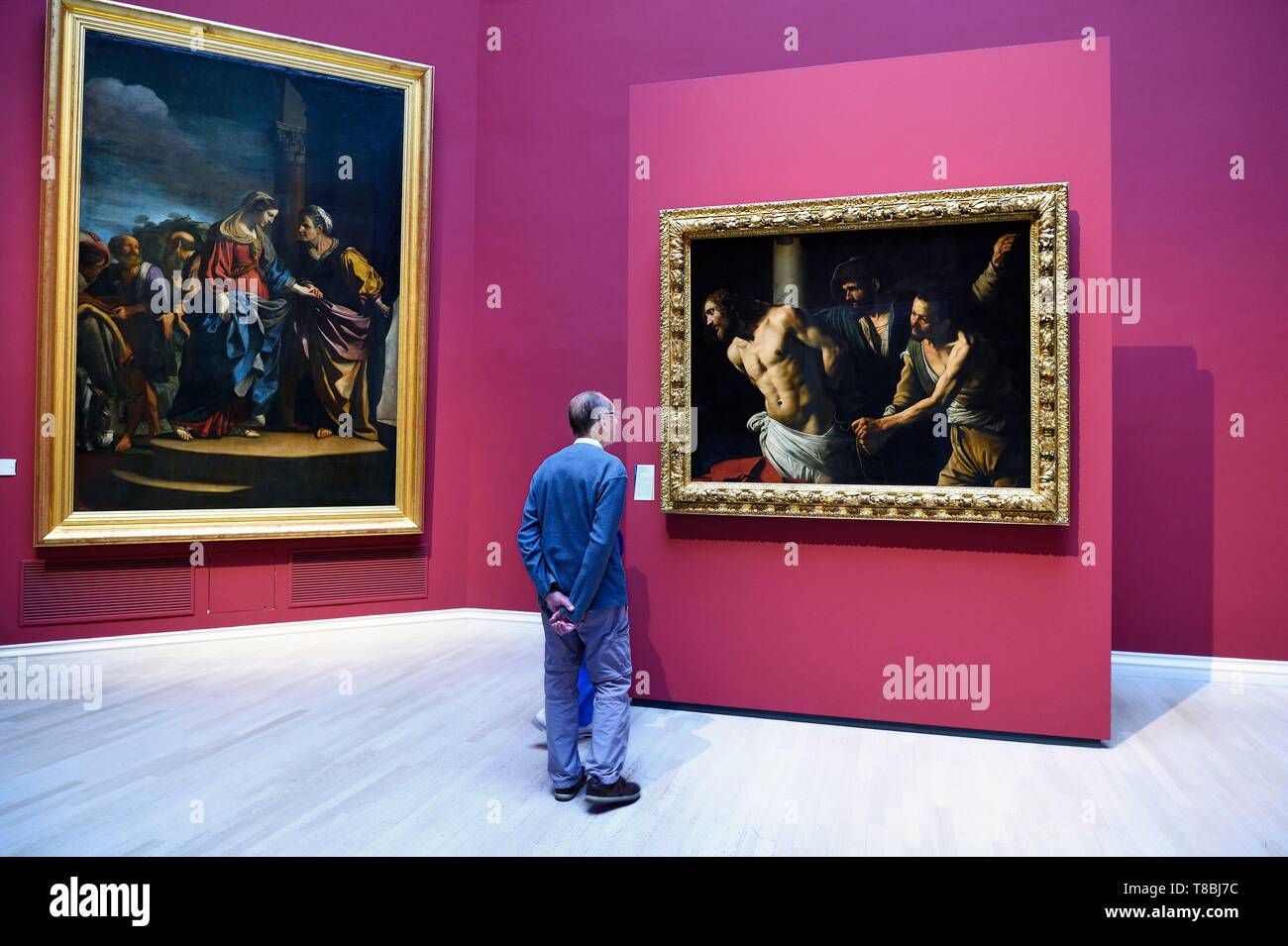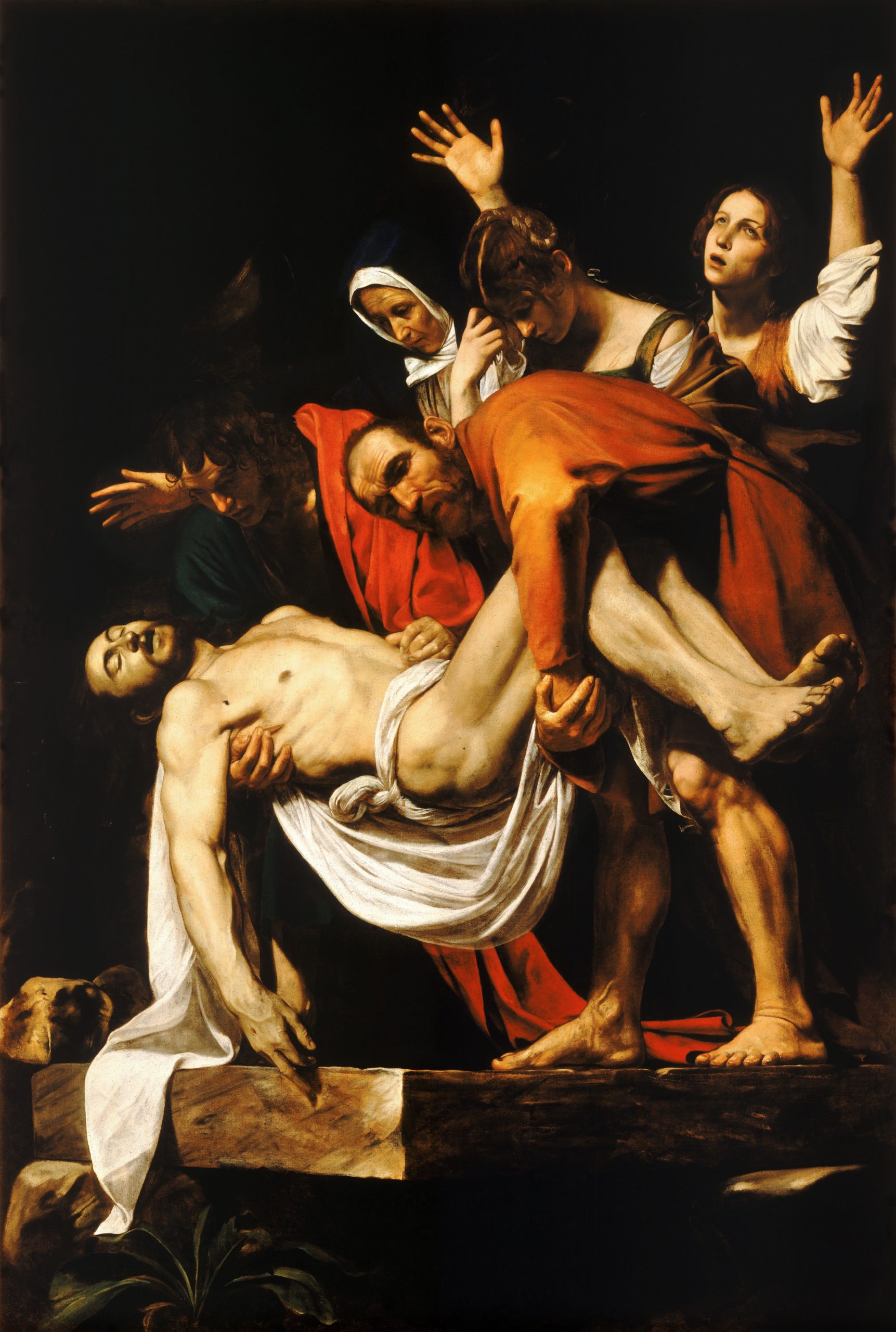
Art Reproduction The Flagellation of Christ Caravaggio Reproductions
Museo di Capodimonte. The Flagellation of Christ is a painting by the Italian Baroque painter Caravaggio, now in the Museo Nazionale di Capodimonte, Naples. [1] It is dated to 1607, and may have been reworked by the artist in 1610. It is not to be confused with Christ at the Column, another Flagellation by Caravaggio of the same period.

LA FLAGELLAZIONE DI CRISTO DI CARAVAGGIO Storia dell'Arte
La iconografía particularmente dramática y cruel de la flagelación de Cristo está muy extendida y muchos artistas, de los menores a los mayores, se han medido con ella, baste pensar en Piero della Francesca, hasta Bramante y Caravaggio. Michelangelo Merisi, conocido como Caravaggio, Flagelación de Cristo (1606-1607) , Museo de Bellas Artes.

La flagelación de Cristo Caravaggio Obra maestra Sherpa con Etsy México
La Flagellation du Christ (en italien : Flagellazione di Cristo) est une peinture à l'huile sur toile du peintre italien Le Caravage, peint probablement en 1607 [1] et conservé au musée de Capodimonte de Naples en Italie.Le même sujet est représenté dans le tableau Le Christ à la colonne (1607) conservé au musée des Beaux-Arts de Rouen.. Elle est considérée comme l'une des œuvres.

Francia, Seine Maritime, Rouen, Museo de Bellas Artes, la pintura La Flagelación de Cristo en la
The Flagellation of Christ (probably 1468-1470) is a painting by Piero della Francesca in the Galleria Nazionale delle Marche in Urbino, Italy.Called by one writer an "enigmatic little painting," the composition is complex and unusual, and its iconography has been the subject of widely differing theories. Kenneth Clark called The Flagellation "the greatest small painting in the world".

Reproducción La flagelación de Cristo Caravaggio Pintores famosos
Ingrese al Museo Capodimonte con Menarini y descubra las anécdotas sobre la obra "La flagelación de Cristo" de Caravaggio.Ver la lista de reproducción comple.

Flagellation of Christ Caravaggio
ANÁLISIS FORMAL. No estamos ante un trabajo cualquiera. Hoy en La Cámara del Arte analizamos La flagelación de Cristo, el que probablemente sea el cuadro de referencia para la explicación de la composición y el tratamiento del espacio en una obra de arte. Piero della Francesca es el culpable.

The Taking of Christ / Caravaggio Caravaggio, Arte barroca, Arte renascentista
The Flagellation of Christ, 1607 by Caravaggio. In The Flaggellation Caravaggio followed a well-established format in arranging the figures. The most influential precedent was Sebastiano del Piombo's Flagellation fresco of 1516 in San Pietro in Montorio in Rome, based on preparatory paintings by Michelangelo.Caravaggio took the fresco as his general model, and as the specific model for the.
CARAVAGGISMO CARAVAGGIO "LA FLAGELACION DE CRISTO"
La flagelación de Cristo (Caravaggio) La flagelación de Cristo es una pintura realizada por el artista italiano Caravaggio ( 1571 - 1610 ), y que en la actualidad se encuentra en el Museo de Capodimonte, Nápoles. Ha sido fechada como perteneciente a 1607, y posiblemente Caravaggio haya seguido trabajándola en 1610 .

The_Entombment_of_ChristCaravaggio_(c.16023) The Quarterly ReviewThe Quarterly Review
It was during his first sojourn to Naples, terminating in July 1607 that Caravaggio painted the Flagellation of Christ for the Neapolitan church of San Domenico Maggiore - the same church that displayed Titian's Annunciation (1557), now also exhibited at Capodimonte. The Flagellation entered Capodimonte in 1972 for reasons of conservation.

Representations of the Flagellation
Christ at the Column (also known as The Flagellation of Christ; c. 1606/1607), is a painting by the Italian Baroque painter Caravaggio, now in the Musée des Beaux-Arts de Rouen, Rouen, France. This is one of two versions of the Flagellation of Christ by Caravaggio painted late in 1606 or early in 1607, soon after his arrival in Naples. The.

Reproducción La flagelación de Cristo Caravaggio Pintores famosos
"La flagelación de Cristo" de Caravaggio es mucho más que una simple pintura religiosa. Es una representación poderosa y visceral del sufrimiento y sacrificio de Cristo, que resuena en el espectador incluso después de tantos siglos. Esta obra maestra no solo marca un punto de inflexión en la carrera de Caravaggio, sino que también ha.

Caravaggio, la pintura, la flagelación de Cristo, 1607 Fotografía de stock Alamy
La flagelación de Cristo es una pintura realizada por el artista italiano Caravaggio ( 1571 - 1610 ), y que en la actualidad se encuentra en el Museo de Capodimonte, Nápoles. Ha sido fechada como perteneciente a 1607, y posiblemente Caravaggio haya seguido trabajándola en 1610. Según Bellori (1672) la obra fue encargada por la importante.

Pin on Gesù
La flagelación (Piero della Francesca) La "Flagelación de Cristo" (en italiano, Flagellazione di Cristo) es una pintura al temple sobre tabla de 59 x 81,5 cm, realizada probablemente entre 1468 y 1470 por el pintor italiano Piero della Francesca. Es una de sus obras más conocidas. Se conserva en la Galería Nacional de Las Marcas en Urbino.

"La Flagelación" di Caravaggio en el Palazzo Reale Cultura y Moda ANSA Latina
The Flagellation of Christ is a painting by the Italian Baroque painter Caravaggio, now in the Museo Nazionale di Capodimonte, Naples. It is dated to 1607, and may have been reworked by the artist in 1610. It is not to be confused with Christ at the Column, another Flagellation by Caravaggio of the same period..

Lienzo Tela La Flagelación De Cristo Arte Sacro Caravaggio 750.00 en Mercado Libre
Violence and drama, Caravaggio's. The Flagellation of Christ. by Dr. Steven Zucker and Dr. Beth Harris. Michelangelo Merisi (Caravaggio), The Flagellation of Christ, 1607, oil on canvas, 286 x 213 cm (Capodimonte Museum, Naples, Italy) speakers: Dr. Beth Harris and Dr. Steven Zucker.

CARAVAGGIO'S DEPOSITION
Caravaggio depicts the prelude to Christ's crucifixion, known in art as the "Flagellation of Christ." The Roman soldier in the bottom left corner crouches as he prepares his lash. He tightly grips a bundle of sticks with his left hand, as his right hand winds a rope to hold them in place. The soldier to Christ's right seizes him by the hair to.